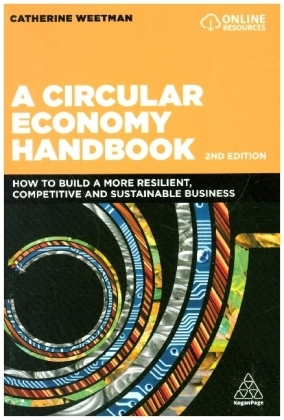
A Circular Economy Handbook - How to Build a More Resilient, Competitive and Sustainable Business
| Verlag | Kogan Page |
| Auflage | 2020 |
| Seiten | 496 |
| Format | 16,0 x 23,3 x 3,2 cm |
| Gewicht | 750 g |
| ISBN-13 | 9781789665314 |
| Bestell-Nr | 78966531UA |
Learn how circular economies can optimize business models and supply chains to regenerate rather than waste and degrade resources.
WINNER: 2018 Les Plumes des Achats & Supply Chain - The Committee Special Prize
As we learn more about the climate and biodiversity crisis, it is clear that how we make and consume things is a major part of the problem. Extraction and processing of materials, fuels and food makes up about half of global greenhouse gas emissions and over 90% of biodiversity loss and water stress. Many modern businesses deplete resources, destroy ecosystems and dump waste and pollution at every stage - harming human health along the way.
Governments, businesses and think-tanks see the circular economy as the way forward. Now in its second edition, A Circular Economy Handbook is a guided tour through the concepts and the practicalities. A unique framework systematically explores the range of circular interventions, including product and supply chain design, material choice and supporting business models.
How does it really work for business? What circular approaches are em erging in food, fashion, consumer technology, packaging and other sectors? How do these reduce risk, improve resilience and build profitable, future-fit organizations? With over 300 real examples from around the world, this is a must-read for businesses, students and policymakers. This new edition has been extensively updated to include the latest trends, thinking, research and solutions, with a new chapter on packaging and 30 new company snapshots.
Inhaltsverzeichnis:
Chapter - 00: Introduction;Section - ONE: An overview of the circular economy;Chapter - 01: The circular economy;Chapter - 02: The design and supply chain;Chapter - 03: Circular business models;Chapter - 04: Enablers and accelerators;Section - TWO: How are businesses adopting circular economy models?;Chapter - 05: Drivers for change;Chapter - 06: Food and agriculture;Chapter - 07: Fashion and textiles;Chapter - 08: Consumer electricals and electronics;Chapter - 09: Industrial manufacturing;Chapter - 10: Packaging and plastics;Section - THREE: What does this mean for supply chains?;Chapter - 11: Supply chain strategy and planning;Chapter - 12: Supply chain operations: Sourcing and procurement, manufacturing, distribution and reverse logistics;Section - FOUR: Implementation;Chapter - 13: Making the business case and starting the journey;Chapter - 14: Glossary;Chapter - 15: Index
Rezension:
"As the world adopts strategies to address the stress that the planet is under, more organizations are realizing that their knowledge and skills need updating and developing. A key aspect of this new sustainable approach is understanding where stuff comes from, how a business uses it and what happens to stuff after its first life. This is where the circular economy comes in and this book provides a range of knowledge inputs, across a number of key sectors and uses business examples which allow any organization to develop new pathways forwards." Dr. David Peck, Associate Professor, Circular Built Environment and Critical Materials, Delft University of Technology (TU Delft), The Netherlands
